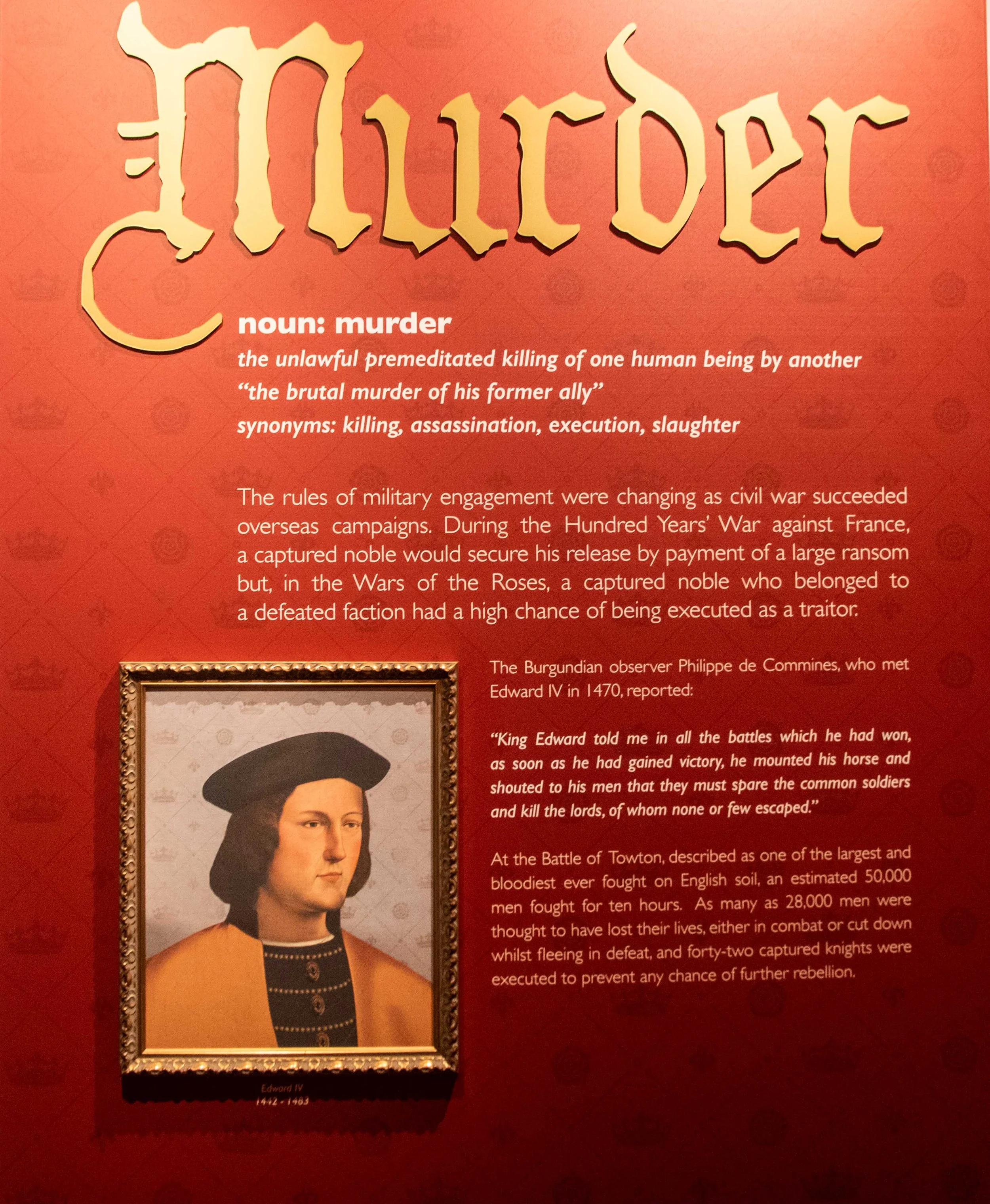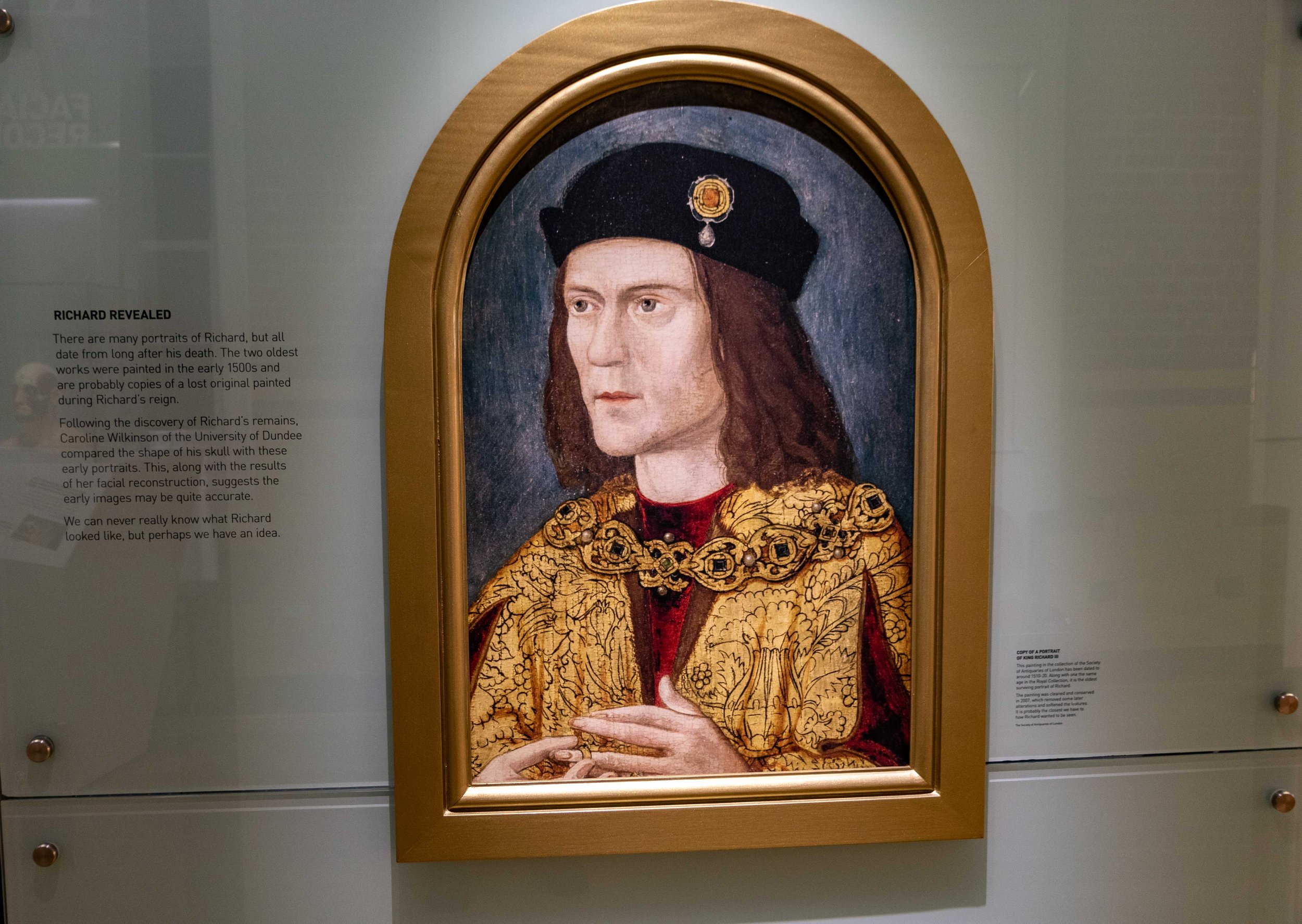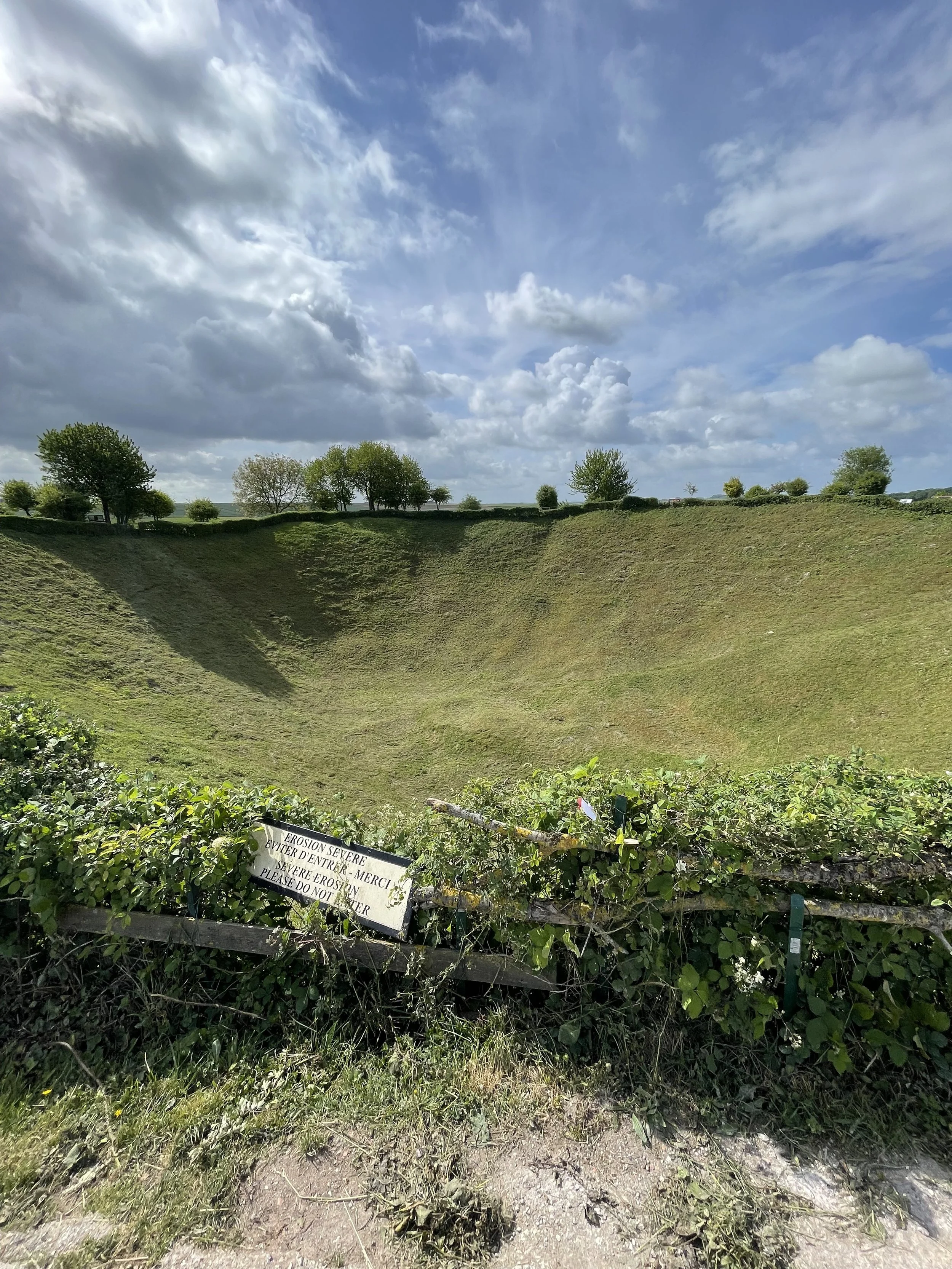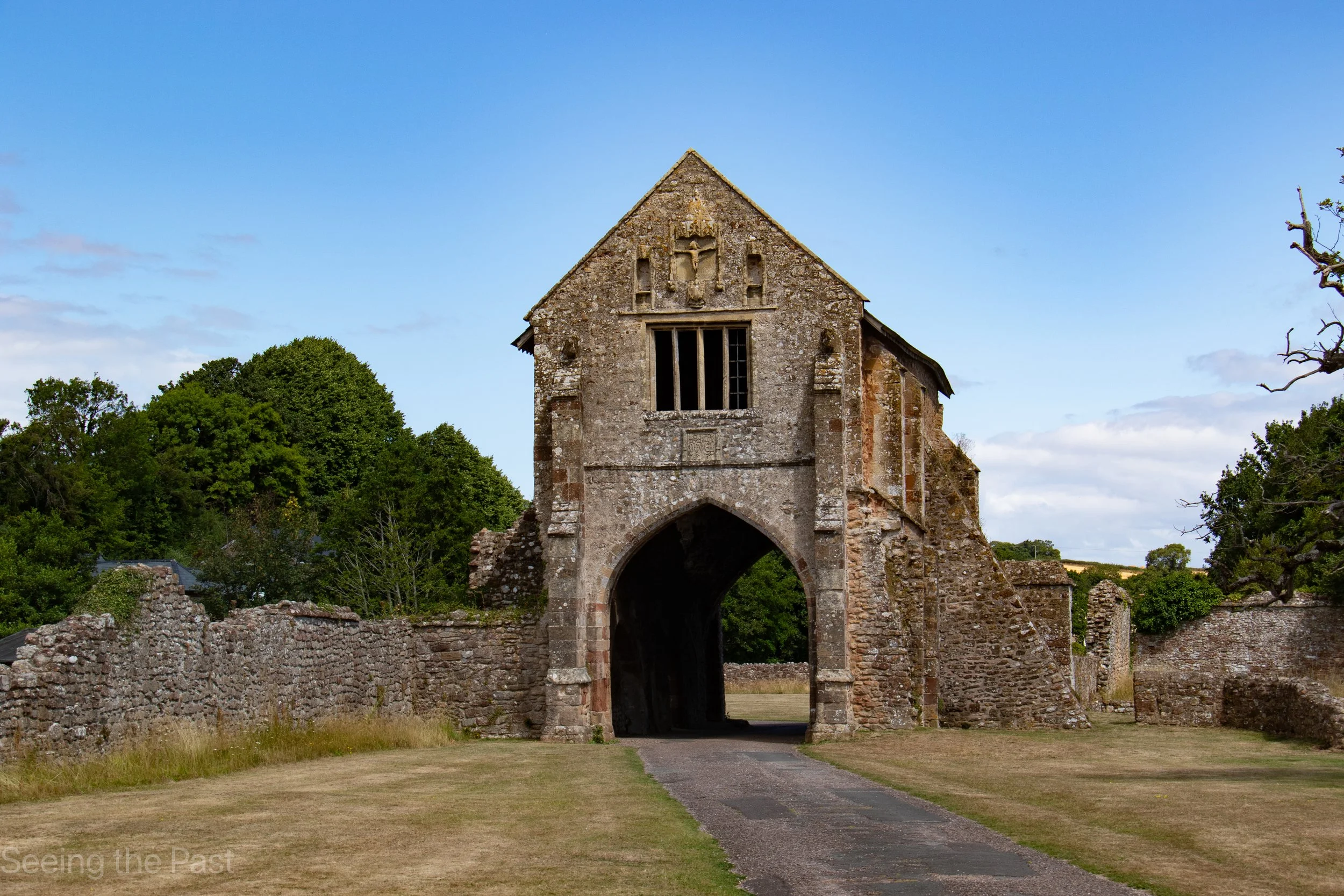The king in the car park 2 : the backstory of the discovery and proof at the Richard III Visitor Centre
/Menu;
What is there to see?
What is there to see?
A visit to the Richard III Visitor Centre is a must for any medieval history fan. It tells the story of the Wars of the Roses using some amazing graphics and how Richard came to rule England. You are then taken on a path to discover what happened to Richard’s body having lost the Battle of Bosworth Field to Henry Tudor. The great mystery was only recently solved but then the task was to exactly locate the skeletal remains. This was not easy because several misleading sources suggested that either his bones had been removed and buried next to a river or actually thrown in that river. This was not the end of the story because the next step was the monumental task of proving that the remains found were actually Richard III. Historian’s judgements would not be sufficient, it had to be proven by mitochondrial DNA. Finally, you can actually see Richard’s open grave!
Part one, the background to Richard’s death.
The first thing you see on entering is an impressive projection of various participants who introduce us to Richard. In the last photo you can see Richard’s back and the effect of scoliosis (curvature of the spine)
Above. Members of the House of York and the House of Lancaster. Note this is not a very clear family tree. You can see this by looking at Henry VI and next to him, Margaret Beaufort. They were not husband and wife.
Above and below. Moving to the left is a room full of information on the Wars of the Roses, Edward IV and Richard.
Some background information about warfare under the Plantagenets. Let me draw your attention to the last paragraph where it states that at the Battle of Towton 28 000 men lost their lives in one day. To give a twentieth century comparison, 20 000 British soldiers were killed on the first day of the Battle of the Somme in World War One. This was a battle considered to be one of the worst in World War One.
Here we have another gruesome event whereby the Earl of Worcester was responsible for the following;
This certainly is not a period in which the English can be proud of their history!
Above. A map showing where the key battles of the Wars of the Roses took place.
Weapons used in the Wars of the Roses and Battle of Bosworth Field. Above from left to right, is a long bow, an arming sword and a rondel dagger. Below is a two handed long sword, a halberd, a poleaxe and a flanged mace.
Above. Richard as king with his queen riding side saddle and the rest of the royal entourage.
Above. The rival sides in the Battle of Bosworth, with King Richard III on the right, the claimant Henry Tudor on the left and the undecided Stanleys in the middle. When the Stanleys saw that Richard’s charge towards Henry was not succeeding, the Stanleys decided to join Henry and Richard was defeated.
Great graphics abound. Above, a great clash of armour as Knights are charge at each other.
Above. Richard is dead and is going to be taken on horseback to his grave in Greyfriars, Leicester. It was not uncommon to see stripped bodies on a battlefield. Suits of armour and royal clothes were worth a fortune. The Bayeux Tapestry showed the Battle of Hastings of 1066 in its middle panel but it showed bodies being stripped naked in the panel along the bottom and this practice took place at Bosworth as well, 400 years later!
Part two, the rediscovery of Richard’s body and his identification.
The key people behind the dig with Philippa Langley being the driving force behind the whole project.
Above, part of a model and a projection of Greyfriars where the body was placed and left after the “Dissolution of the Monasteries when Greyfriars was dismantled. Surprisingly Richard’s grave was left untouched and forgotten. In 1611 John Speede wrote that Richard’s tomb was completely destroyed with his remains being dug up and buried at one end of “Bow Bridge”. Apparently he failed to support his story with any evidence other than from local oral accounts that had been passed down over time. John Ashdown-Hill checked out this story and concluded that, “it is very difficult to see how any burial would have been possible under the low stone arches of the old Bow Bridge".
Above. On the right there is a model of Richard’s body and on the left, looking like a figure from Star Wars is a copy of Richard’s suit of armour.
Above. A model of Richard’s curved spine. Julian Humphreys in History Extra March 11th 2021 wrote that “this was a scoliosis (sideways curvature of the spine) rather than a kyphosis (a true hunched back) and it’s been proved that it wouldn’t have prevented him from charging into battle, it’s thought that one of Richard’s shoulders would have been noticeably higher than the other”.
Above and below, the stages towards a computerised reconstruction of Richard’s face using a scan of his skull.
Above. Richard’s head based on the computerised 3D model.
Above. Based on the evidence gathered, the Leicester archaeologists suggest this this is the best painting of Richard.
Above. Leicester’s news conference when the confirmation that it was Richard’s body was announced. Here Dr Jo Appleby, Leicester university’s osteologist is briefing the press about discoveries from the bones.
How were Richard’s remains identified?
Dr Turi King explains how she came to deduce that the remains were definitely Richard III. Richard’s body was identified by discovering a mitochondrial match between his remains and that of Michael Ibsen his distant cousin. Mitochondrial DNA can be found in a variety of cells in skeletons and so there was a good chance of discovering some in Richard’s remains. Mitochondrial DNA is passed down through female ancestors. Mothers pass it down to all of their children, boys and girls but only girls pass it on to the next generation. As it can only be passed down from one generation to another in human eggs and men don’t have any eggs, it is only passed on by women. If there are no female children in a family, that family cannot pass it on any further down the line. Obviously, Richard could not pass it on but his sister could and so John Ashdown-Hill researched Richard’s family tree but only going down the female line. Richard’s sister, Anne of York had the same Mitochondrial DNA as Richard and so her lineage was followed all the way down the female line, ending up with a lady called Joy Ibsen and her son Michael Ibsen. Loads of times a female line would come to an end and so other lines had to be pursued but eventually John Ashdown-Hill managed to find that female line. To be absolutely certain, Leicester University did similar research to John Ashdown-Hill and found another complete female line to a lady called Wendy Duldig. Their mitochondrial DNA matched each other and they also matched Richard’s remains. Their direct female lines both began with Richard’s elder sister Anne of York but after two generations split into two distinct but direct female lines.
Scientists could also do a trace through the Y chromasone in males but to be successful, every father in a tree has to be a biological father but in Richard’s case, someone must not have been the biological father of his so called son! Somewhere in the 19 generations, someone was not a real biological father and therefore people who were thought to be his living descendants through family trees, were not. Apparently, this occurs according to research in about 1-2 percent of the male lines. Historically, a break in the line could mean that royal descent was incorrect. That is to say, if Edward III was not John of Gaunt’s biological father, none of the House of Lancaster via Henry IV or the Tudors really had a legal claim of descent. Likewise, if Edward III was not the biological father of Edmund Duke of York, none of the Yorkist claims ie Edward IV, Edward V or Richard III were legal! Unfortunately, we will never know the answer to these fascinating questions.
Interestingly, as there are no contemporary paintings of Richard, DNA can also tell Richard’s eye and hair colour. He turned out to have blue eyes and as a toddler, had blond hair which would have turned darker as he reached adulthood.
When DNA is put alongside all the other evidence it turns out that Leicester University is 99.999% certain that the remains are Richard III’s. That evidence being, the battle wounds, the age of the skeleton being similar to Richards, the date given to the remains being the end of the fifteenth century, the location of the body and how it was buried ie done in a rush with little concern or respect as well as the DNA evidence.
Above and below. Lastly, you can see his actual grave and stand right above it. These two photos are not good but you can see the outline of the skeleton’s position and get an idea of what the archaeologists discovered.
A timeline of Richard III
Born October 2nd 1452, the youngest of 4 brothers.
May 22nd 1455 The Wars of the Roses began.
March 29th 1461 , Richard’s brother, Edward Duke of York, defeated Henry VI at the Battle of Towton and became King Edward IV on 28th June1461 . Richard became the Duke of Gloucester
1464 Edward IV secretly married Elizabeth Woodville.
October 1470-April 1471 Henry VI temporarily reclaimed the throne before Edward IV took over once more.
1472 Richard married Anne Neville
December 1473 Richard’s son, Edward of Middleham, was born
April 9th 1483 Edward IV died. His eldest son, Edward V aged 12, should have succeeded but was never crowned!
April 30th 1483 Richard and his ally, the Duke of Buckingham, took control of Prince Edward from the Queen’s relatives, the Woodvilles, and he was eventually placed in the Tower of London “for his own protection”. Queen Elizabeth with her family fled to Westminster Abbey and claimed “Sanctuary” ie no-one could arrest them because they were on holy ground.
May 4th 1483 Richard was made Lord Protector to help Prince Edward rule England whilst he was young.
June 16th 1483. Prince Edward’s younger brother, Richard Duke of York was persuaded to join him in the royal apartments in the Tower of London.They were later known as the “Princes in the Tower”.
22nd June 1483 All of Edward’s children were declared illegitimate and therefore making Prince Edward no longer the “soon to be crowned King”. It was claimed that as Edward IV had an agreement of marriage with Eleanor Talbot and thus any second marriage would be bigamous and illegal. Any children from this second marriage were therefore illegitimate and unable to claim the throne.
June 25th 1483 Richard was offered the throne by an assembly of Lords and commons.
July 6th 1483 Richard and Anne were crowned.
Summer 1483 The “Princes in the Tower” disappeared. Rumours began suggesting that they had been murdered by their uncle Richard!
October 1483. The Duke of Buckingham and associates rebelled against King Richard. Their attempt to overthrow Richard failed and Buckingham, once Richard’s “Right Hand Man”, was captured and executed on November 2nd.
January 1484. Richard held his only parliament.
March 1484. Richard reached a formal agreement with the ex queen, Elizabeth Woodville allowing her daughters to come out of sanctuary.
April 9th 1484. Richard’s only son, Edward died.
March 16th 1485 Richard’s wife, Queen Anne died, probably from Tuberculosis. There was an eclipse that day which some took to mean a bad omen for Richard.
August 7th 1483 Henry Tudor and his army landed at Milford Haven.
August 22nd 1483 Henry Tudor defeated and killed Richard III at the Battle of Bosworth Field.
August 1485 Richard was buried in Greyfriars Friary.
1538. The last of the Friars left Greyfriars after Henry VIII’s “dissolution of the monasteries” Richard’s grave was left undisturbed.
2004/5 Philippa Langley was convinced that Richard’s grave could be found in Leicester’s Social Services car park.
Summer 2005 Dr John Ashdown-Hill announced that there was a living relative of Richard III, Joy Ibsen who had the same mitochondrial sequence as Richard III. This meant any bones found that could be used to extract mitochondrial DNA . Joy had an unbroken female line right back to Richard’s sister, Anne of York. As Anne and Richard had the same mother they would have the same mitochondrial DNA but only females through their eggs could pass it on down the family line.
February 2009. Philippa created the “The Looking For Richard Project” made up of a team of experts.
August 2012 The dig began in Leicester Social Services car park and on August 25th the Richard’s remains were discovered.
February 4th 2013 Richard Buckley, the lead archaeologist announced that tests had proved that the remains found were, indeed, those of Richard III.
March 26th 2015 Richard III was laid to rest in Leicester Cathedral
FAQs about Richard III
-
It was found under the Social Services Car Park in Leicester. This was originally a Greyfriars’ Friary, a religious institution like a monastery except for Franciscan Friars living there.
-
They disappeared in the summer of 1483 during Richard III’s reign. He had placed them in the tower “for their own safety”. It wasn’t a giant prison in those days and had royal apartments. There is no evidence that he killed them or had them killed but at the time there were plenty of rumours around when they disappeared. It is argued that he didn’t need to kill them because they had been declared illegitimate and so could never be kings!
-
Yes, Anne Neville. He married her in 1472 but sadly she died of tuberculosis in March 1485 when Richard was still king.
-
Yes, he had one son, Edward of Middleham who was born in December 1473 but died 10 years later in April 1484.
-
They used mitochondrial DNA. It is passed down family lines by females in their eggs. A direct line was found of females from Richard’s sister, Anne, to a lady called Joy Ibsen and her son Michael Ibsen. They had the same mitochondrial DNA as Richard’s sister, her mother, Cecily Neville and Richard himself.
-
He was buried in Greyfriars’ Friary. It was knocked down in 1538 and his body was forgotten about. Local legend developed that the body was either buried under a bridge or thrown into a river! Greyfriars’ Friary was later confused with Blackfriars’ Friary.
-
He had one shoulder higher than the other but he was not a hunchback or “crookback”. When his body was found, his spine was in an S shape called Scoliosis but this did not mean he had a hunchback.
Essential information.
Current ticket prices
Adult (16+ Years) £9.25
Child (5 – 15 Years) £4.75
Family (2 adults and 2 children) £23.00
Over 60s, Student £8.30
Children aged 4 and under and carers are admitted free of charge. Tickets can be obtained for them, on arrival at the Visitor Centre.
Please note that unless otherwise stated, anyone under 16 must be accompanied by an adult, and up to four under 16s can be looked after by one adult.
Prices are subject to change.
Full priced tickets are valid for a year from purchase and can be used to make return visits on any day the Centre is open, up to a year after the date of purchase. Complimentary, discounted and school visit tickets are only valid on the day of first use and cannot be re-used but it is possible to upgrade your ticket on the day.
As one of the conditions of the annual ticket, you will be asked to sign your ticket on the day of purchase and may be asked to show proof of signature on subsequent visits.
Getting there;
By car sat nav
King Richard III Visitor Centre
4A St. Martin’s,
Leicester,
LE1 5DB
If you’re using a satellite navigation system, please note that the area around the Visitor Centre is largely pedestrianised. We recommend using the postcode for the Holiday Inn Hotel (LE1 4LF) from which there are several parking options as described below.
FROM THE SOUTH:
Leicester is located just off the M1. Exit the M1 at Junction 21, signposted M69 and Leicester. Follow signs for A5460 heading towards Leicester City Centre. Follow for approximately 3 miles and follow signs for Castle Gardens and Highcross. Arrive at St Nicholas Circle and take the 3rd exit off the St Nicholas Circle roundabout, onto Peacock Lane. Leicester Cathedral is located on your left, next to St Martins House Conference Centre.
FROM THE NORTH:
Leicester is located just off the M1. Exit the M1 at Junction 22 and join the A50. Follow the A50 for approximately 8 miles, then follow signs for Vaughan Way then follow signs for the A47. You will arrive at a junction with Highcross straight ahead. Take the left lane to avoid the underpass which leads up to St Nicholas Circle and the Holiday Inn hotel. Take the left lane and follow onto Peacock Lane. Leicester Cathedral is located on your left, next to St Martins House Conference Centre.
Parking
Long-stay car parks are available nearby at St Nicholas Circle NCP (next to the Holiday Inn, postcode LE1 4LF) and at the Highcross Shopping Centre (accessible from Vaughan Way, postcode LE1 4QJ).
New Street Car Park
The New Street car park (a facility managed by our partners at St Martins House) has now reopened following resurfacing. At present, parking on Monday to Friday is restricted to permit holders only, but on Saturdays and Sundays it is open from 7am to 6pm at the following rates payable by debit card or chip and pin only – no cash. This is in order to protect our staff.
By train
There are good rail links to Leicester from Birmingham, Sheffield and London. Cathedral Gardens and St Martins House are a 10–15 minute walk from Leicester city rail station, turning right out of the exit along Granby Street and Gallowtree Gate, before turning left at the Clock Tower along Silver Street.
By bus
For information on bus services in Leicester, please visit the City Council website: http://www.leicester.gov.uk/transport-and-streets/travelling-by-bus/
For further information on bus services throughout Leicester and Leicestershire, including Park & Ride services, call the Travel Line on: 0871 200 22 33.
Entrance fees;
At the time of writing, entrance is free but a voluntary donation is encouraged.







































Buckler’s Hard has three historical phases; a proposed sugar town that failed, a shipbuilding yard initially providing ships for the Royal navy and a base for various things linked to World War Two but especially D Day. Walking from the car park you suddenly come across this beautiful, unmodernised, Georgian street. One side of the road contains an amazing museum of all the activities that have taken place over the last 300 years. It includes some intricate models of sailing ship building here, loads of artefacts and full size waxwork models illustrating life in the late 18th and early 19th centuries.